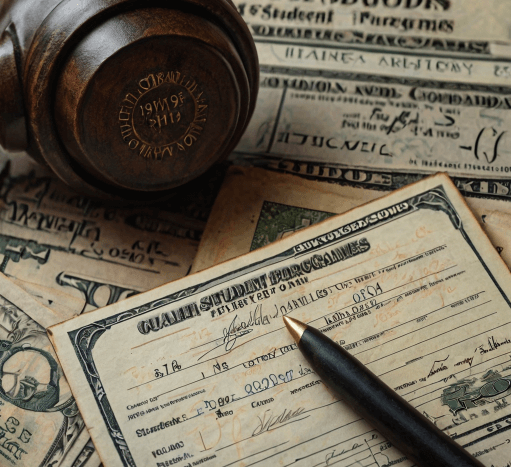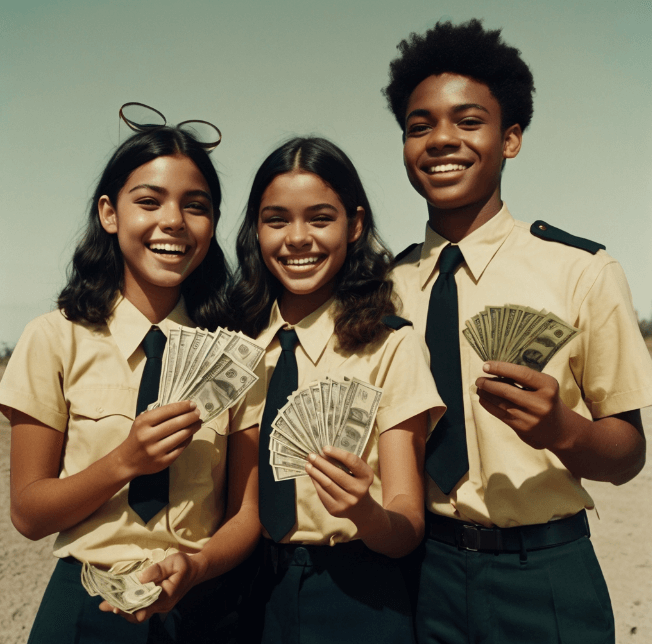An Overview of Student Loan Forgiveness Programs
Hey friend! If you’re struggling under the weight of student loan debt like millions of other students, you’ll be glad to hear there are programs that offer student loan forgiveness. The government and even some private companies offer these programs as a way to make loans more manageable for people working in certain careers or facing financial hardship.
The way they work is that if you qualify and meet the requirements, you can have a portion or even all of your student loans forgiven. Wouldn’t that be a dream come true? No more stressful monthly payments! Here’s an overview of some of the main federal and state programs, as well as tips for qualifying and applying.
Federal Student Loan Forgiveness Programs
Public Service Loan Forgiveness (PSLF)
Of all the federal forgiveness programs, PSLF is one of the largest and most well-known. To qualify for PSLF, you’ll need:
- Federal Direct Loans (most common student loans)
- To be repaying your loans on an income-driven repayment (IDR) plan
- Work full-time for a U.S. federal, state, local, or tribal government or not-for-profit organization
- Make 120 qualifying payments (about 10 years of payments)
If approved, you can have the remainder of your balance forgiven tax-free! Teachers, government employees, nurses, military members, and many other careers may qualify for PSLF.
Teacher Loan Forgiveness
If you are employed as a full-time teacher at certain low-income schools and educational services agencies, you may be eligible for Teacher Loan Forgiveness after 5 consecutive years. This can cancel up to $17,500 of your subsidized and unsubsidized loans. Note that it doesn’t apply to PLUS loans. Most states also offer loan repayment assistance programs for teachers.
Income-Driven Forgiveness Plans
Here’s a little-known fact: Did you know you can actually get federal student loans forgiven after 20-25 years through income-driven repayment (IDR) plans?
IDR plans allow you to set an affordable monthly payment based on your income and family size. Payments can be as low as $0/month. Any remaining balance left after making 20-25 years of qualifying payments is forgiven.
Here are some of the most common IDR plans offering forgiveness:
- Revised Pay As You Earn (REPAYE): Forgiveness after 20 years of payments
- Pay As You Earn (PAYE): Forgiveness after 20 years of payments
- Income-Based Repayment (IBR): Forgiveness after 20-25 years of payments
- Income-Contingent Repayment (ICR): Forgiveness after 25 years of payment
The caveat is that you may owe taxes on the amount forgiven under current tax laws. But it’s still an excellent long-term forgiveness option, especially if you expect to have a lower income.
State and Non-Profit Student Loan Forgiveness Programs
Along with federal options, many states and private non-profits also offer student loan repayment assistance programs (LRAPs). These function like grant programs, where they give you money to put toward your student loans.
Here are some examples:
- State LRAPs for lawyers, doctors, teachers, nurses, STEM grads, and more
- Non-profit hospitals offering LRAPs for nurses and doctors
- Military branches offering LRAPs and full loan repayment
- Private companies offering repayment help as an employee benefit
The perk amount, requirements, and application process really vary between programs, so you’ll need to do your research. But often these programs have more flexible eligibility requirements than federal programs, so they are worth looking into.
Tips for Qualifying and Applying
If you want the best shot at getting your loans forgiven, make sure you:
- Review eligibility criteria carefully: Every program has detailed requirements, so read the fine print to ensure you qualify before applying.
- Submit an Employment Certification Form annually if required: This is mandatory for PSLF and confirms you still work for an eligible employer.
- Enroll in an IDR plan if told to: Most forgiveness programs require being on one of the IDR plans we discussed earlier.
- Send in your application and recertification paperwork by the deadline: Missing deadlines could delay your progress towards forgiveness.
- Get on an auto-debit schedule: Being late on payments could also jeopardize your eligibility for many forgiveness programs.
The application process varies by program but may require submitting proof of employment, income information, and student loan data.
Patience is essential, as it takes time for applications to get reviewed and loan servicers are notoriously slow. But with dedication to the process, getting forgiveness is completely possible!
Should I Refinance My Student Loans?
With interest rates climbing, you may be wondering if you should refinance your student loans to lower your interest rate. Just know that when you refinance federal loans into private ones, you lose access to the forgiveness programs we’ve discussed.
So I suggest waiting until after you apply and find out if you’ll receive any forgiveness. If you get denied or have a balance remaining, then you can look into refinancing options.
Let’s Recap
There are a variety of federal, state, and private student loan forgiveness programs available if you meet certain eligibility criteria. These can forgive a portion or all of your loan balance over time. Some of the top options include Public Service Loan Forgiveness, Teacher Loan Forgiveness, income-driven repayment plans, state LRAPs, and employer repayment assistance.
Maximize your chances of approval by thoroughly reviewing requirements, submitting paperwork annually, sticking to deadlines, making payments on-time, and being patient throughout the process. Refinancing should typically wait until after applying for forgiveness programs.
I know battling student loans is exhausting. But hopefully learning about these programs gives you renewed hope and a game plan. With commitment to the process, you could get thousands or even tens of thousands forgiven! Let me know if you have any other questions.






Leave a Reply